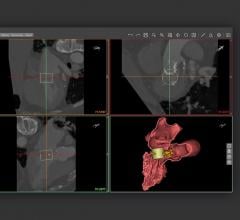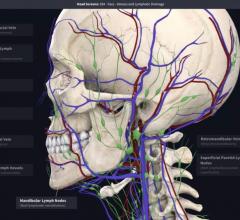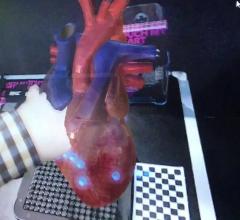
The Heart Hospital at Abbott Northwestern Hospital, where cardiologists with the Minneapolis Heart Institute practice.
The practice of cardiology is going through incredible changes. With more cardiologists interpreting CT data, they are learning new and innovative ways to quickly and more effectively evaluate, diagnose and treat patients in a specialty where time is of the essence.
The Minneapolis Heart Institute (MHI) is leading the way in CTA by utilizing best practices in its high-volume facility, conducting clinical research and partnering with industry for research and product development, incorporating state-of-the-art technology and community outreach and training programs.
The Experience
MHI has 45 cardiologists who specialize in prevention, state-of-the-art diagnostic and interventional technologies for cardiovascular disease. Traditionally, it has been a facility of “firsts” in cardiac care. It was first to implant the Symbion total artificial heart (TAH) in a woman, the first to use an artificial vein graft in bypass surgery and was one of three centers in the U.S. to receive approval to implant the artificial heart back in 1985. With a spirit of innovation, the organization strives to offer the most advanced, comprehensive suite of services to its high volume of patients.
Cutting-Edge Technology
Although MHI offers myriad services, one technology keeping the Institute on the cutting edge is cardiac imaging. The organization commits a significant amount of resources to research and development, and it incorporates imaging into its daily practice. Among other equipment, the institute uses a 16-slice Siemens scanner, a 64-slice Siemens scanner and Vitrea software from Vital Images for heart imaging of its thousands of patients each year.
MHI utilizes both CT and MR in its cardiac advanced imaging center. MR and CT create synergy as CT is rapidly becoming the standard for coronary evaluation and MR is well established for assessing cardiac function. The high-volume clinic performs up to 15 CT scans daily and a number of MRI scans.
Cardiac CT is becoming a more widely used procedure, primarily because of its high negative predictive value in coronary artery disease, its noninvasive nature and its low cost compared to conventional coronary angiography. To better evaluate the presence of disease in the cardiac anatomy, cardiologists at MHI view the heart in 2-D, 3-D and 4-D.
Because the heart is such a dynamic organ, viewing it in multiple dimensions (including in motion) allows a cardiologist to measure calcium in the coronary arteries and the degree of coronary stenosis, as well as assess cardiac function. Historically, these views were only available in 2-D or were nonexistent, giving cardiologists only a limited or “flat” view of the heart. With CT and MR scanners now becoming commonplace within cardiology, the ability to view and manipulate images helps cardiologists analyze and determine disease earlier — saving time, money and, most important, patients’ lives.
“Viewing the heart in multiple dimensions changes the way we practice medicine,” said Rob Schwartz, M.D., a cardiologist with MHI. “It supports our commitment to patient care, giving us the ability to review and evaluate a patient noninvasively and faster than ever before.”

 May 12, 2020
May 12, 2020 








